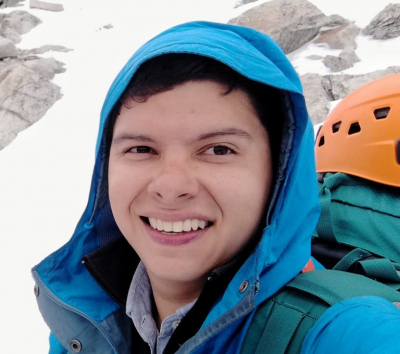- Graduate School GLOMAR
- PhD student members
- Juan Camilo Gómez Gutiérrez
Juan Camilo Gómez Gutiérrez
| Institution: | University of Bremen |
| Office: | MARUM I, room 1260 |
| Phone: | +49 421 218 - 65940 |
| E-mail: | [Bitte aktivieren Sie Javascript] |
| Other webpage(s): | Juan's MARUM web page Juan´s project web page |

PhD Project
Tracing continental weathering during the Permo-Triassic extinction event
Continental weathering is a critical variable in Earth’s climate system and a key component of the processes influencing ocean-atmosphere and biogeochemical cycling. Chemical weathering of continental silicates consumes atmospheric carbon dioxide and acts as an effective climate control process. In addition, weathering delivers carbonate and metal ions into the world’s oceans with implications for ocean pH, alkalinity, and nutrient supply. The evolution of weathering through time and its response to external forcing related to changes in climate remains, however, poorly constrained. At times of mass extinction, where the Earth witnessed profound biological changes and experienced extreme environmental perturbations, continental chemical weathering is often listed as a main environmental factor influencing the carbon cycle. The direct cause of the greatest mass extinction of the Phanerozoic, the Permo-Triassic event, is widely debated, but a pulse of massive and rapid release of carbon dioxide from Siberian Trap volcanism is thought have triggered seawater acidification, global warming and, through increased greenhouse conditions with elevated continental discharge and nutrient input, marine anoxia, proposed mechanisms for species
extinction.
To document the role of weathering as a climate control process, and to investigate the link between continental weathering, anoxia and nutrient cycling, I aim to produce high resolution lithium, magnesium and strontium isotope profiles from well-characterized marine carbonates deposited along distinct continental margins of the Tethyan ocean. Each isotope system can constrain distinct and discrete isotopic fingerprints of weathering processes. In combination, these isotope proxies will allow delineating changes in continental weathering and ocean alkalinity and will provide improved insights into how the Permo-Triassic environment evolved and how weathering helped driving changes in ocean-atmosphere chemistries. Available samples will be simultaneously evaluated by other participating scientists to obtain additional proxy data and biological consequences to generate key biogeochemical information on nutrient availability, productivity and anoxia and their impact as climate-related stressors on ecosystems.
Thesis Committee
| Prof. Dr. Simone Kasemann | University of Bremen |
| Dr. Friedrich Lucassen | University of Bremen |
| Annette Meixner | University of Bremen |
| Prof. Dr. Rachel Wood | University of Edinburgh, UK |
| Prof. Dr. Tim Lenton | University of Exeter, UK |


